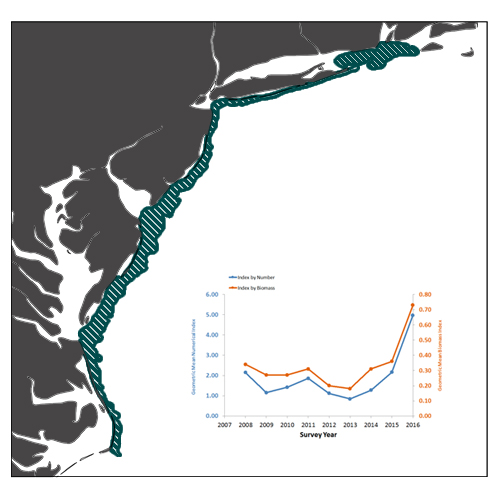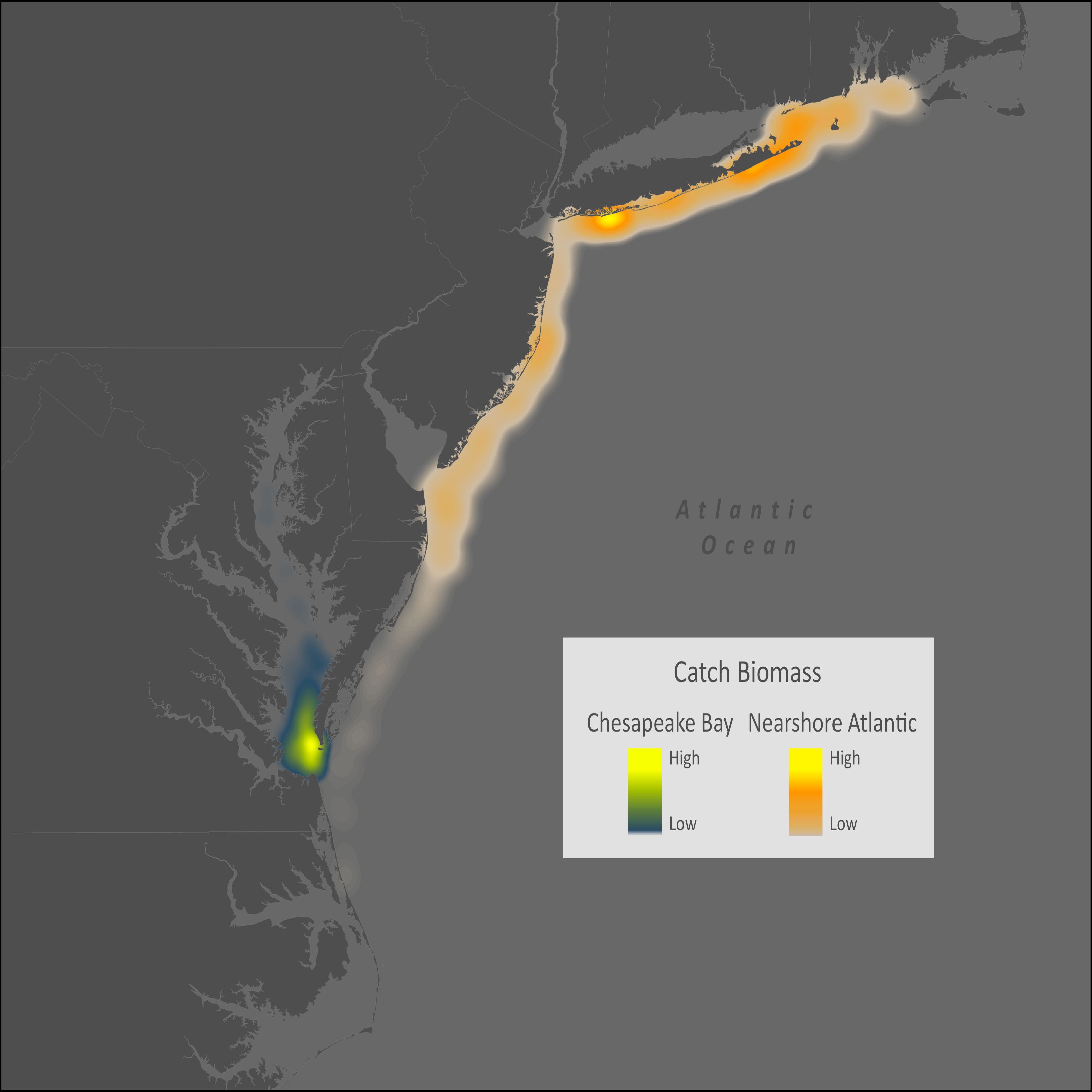Habitat, biology, and fisheries
Generally inhabits sand to sand/silt or mud sediments in relatively shallow waters (less than 110 m); most abundant from 1 to 2 m to usually less than 56 m. Occurs in most bays and estuaries along USA coast south of Cape Cod; north of Cape Cod usually inhabits nearshore waters. Adults are euryhaline, occurring at salinities of 5.5 to 36.0 ‰. Sensitive to hypoxic conditions; few individuals collected where DO concentrations were less than 3 mg/l. Juveniles migrate from shallow inshore waters to deeper offshore waters as they grow. Juveniles on Georges Bank (less than 60 m) undergo seasonal movements to deeper waters along southern flank of the Bank during late autumn as bottom temperatures drop, and overwinter in deeper waters until late spring.Spawning occurs throughout most of year, beginning in February
or March in inner shelf waters, peaking in Middle Atlantic Bight in May, extending onto Georges Bank during summer, and continuing into autumn in southern portions of the range. Species apparently has a split spawning season in the Middle Atlantic Bight with peaks in spring and autumn.Some spawning may occur in high salinity portions of estuaries in Middle Atlantic Bight and in coastal habitats of North and South Carolina. Spawning occurs in the evening or at night on or near the bottom at temperatures ranging from 6 to 21 degrees C. Eggs are buoyant and spherical, 0.9 to 1.4 mm in diameter, with a single oil globule (0.2 to 0.3 mm in diameter). Females are sexually mature at 3 to 4 yr (about 22 cm total length). Juveniles and adults feed on small crustaceans, especially mysids and decapod shrimps, various fish larvae, and small fishes. Major predators,
particularly of juveniles, include spiny dogfish, thorny skate, goosefish, Atlantic cod, black sea bass, weakfish, and summer flounder. Seldom exceeds weights of 350 to 400 g. Not targeted by commercial fisheries, but caught as bycatch in bottom trawl fisheries and made into fishmeal. Increased landings during the mid-1980s
in the northern portions of the range probably reflect an expansion of the fisheries offshore and
increased targeting of alternative species as
stocks of other, more marketable, flatfish decreased. Total landings in the Gulf of
Maine-Georges Bank region peaked in 1991
(about 2 800 t), then decreased significantly and
have remained at less than 1 000 t; stock is considered to be overexploited.
|






